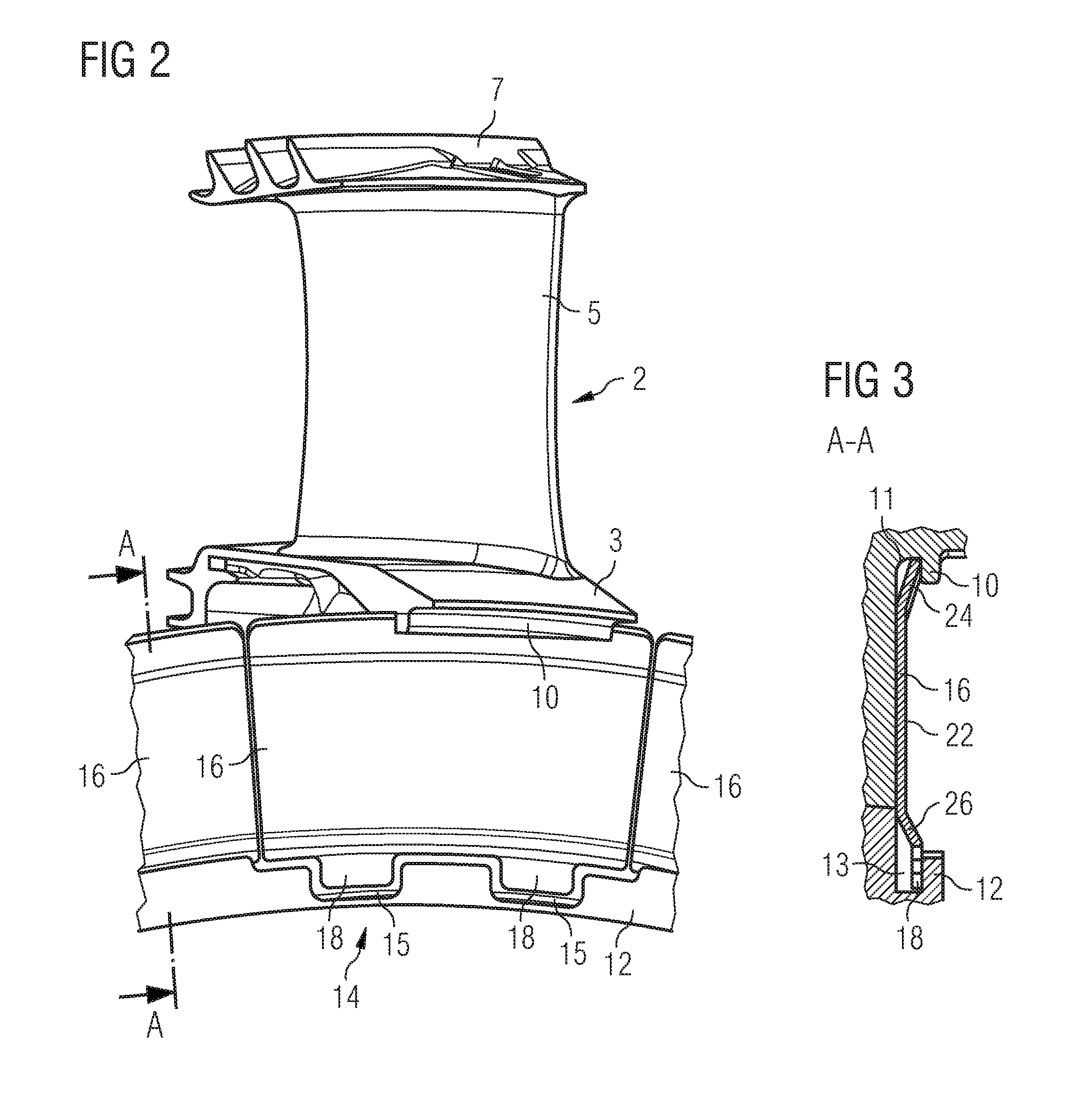Turbine blade assembly
a technology of turbine blades and components, applied in the direction of liquid fuel engines, marine propulsion, vessels, etc., can solve the problems of not being able to fit traditional plates, and achieve the effects of reducing the cost of machined alternatives, preventing excessive leakage, and preventing excessive leakag
- Summary
- Abstract
- Description
- Claims
- Application Information
AI Technical Summary
Benefits of technology
Problems solved by technology
Method used
Image
Examples
Embodiment Construction
[0024]FIG. 1 shows a turbine blade assembly with a turbine blade 2, comprising a top portion 7, an airfoil 5, a platform 3, a groove 11 with a rim 10 and a turbine blade root 6 and a turbine disc 4 comprising notches 8 and a circular groove 13 (see FIG. 3) with a rim 12 comprising a castellated part 14 with gaps 15.
[0025]The turbine blade 2 is used in a gas turbine where hot pressurized gas is guided towards turbine blades with airfoils that are fixed on a rotor to move the turbine blades and thus drive the rotor. The rotor comprises several turbine discs 4. The turbine blades 2 are mounted to a turbine disc 4 by their turbine blade roots 6 that are inserted into notches 8 of the turbine disc 4. Although the notches 8 in FIG. 1 are oriented axially through the disc 4 so that they extend more or less perpendicular to the end and back faces of the disc 4 they may sometimes be oriented such that they extend more or less tangential to the end and back faces of the disc.
[0026]The platfor...
PUM
 Login to View More
Login to View More Abstract
Description
Claims
Application Information
 Login to View More
Login to View More - R&D
- Intellectual Property
- Life Sciences
- Materials
- Tech Scout
- Unparalleled Data Quality
- Higher Quality Content
- 60% Fewer Hallucinations
Browse by: Latest US Patents, China's latest patents, Technical Efficacy Thesaurus, Application Domain, Technology Topic, Popular Technical Reports.
© 2025 PatSnap. All rights reserved.Legal|Privacy policy|Modern Slavery Act Transparency Statement|Sitemap|About US| Contact US: help@patsnap.com



